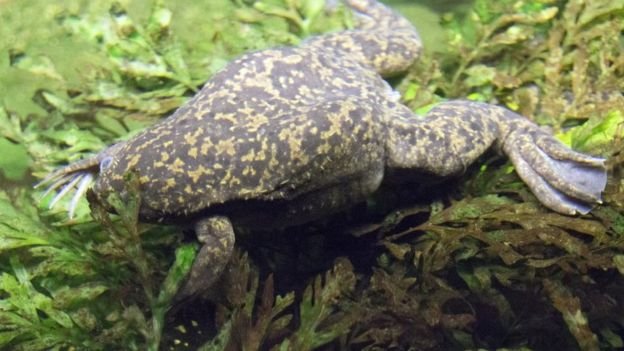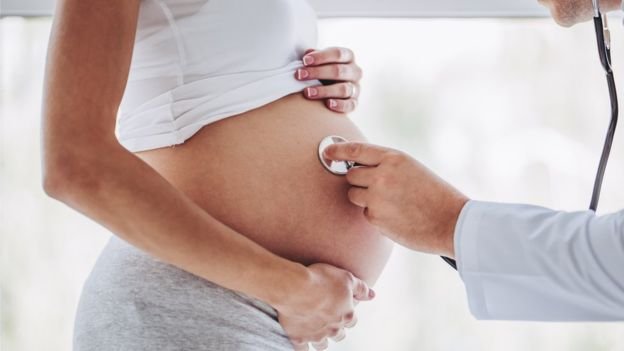The incredible (but true) story of how doctors used frogs to perform pregnancy tests

Nowadays, doing a pregnancy test is simple: you only need to urinate in a contraption the size of a toothbrush and wait a few minutes to know the result.
But in the 30s and until the late 60s the best way to perform a pregnancy test was, surprisingly, with the help of a species of African frog called Xenopus laevis.
Although it sounds like pseudoscience, the Hogben-patented test by the British scientist Lancelot Hogben-was a practice recognized by doctors and carried out in clinics all over the world.
In the 1940s there were up to four specialized centers covered by the National Health Service in the United Kingdom where doctors could send urine samples.
The former laboratory technician Audrey Peattie explained to BBC Ideas what the process was like: "The hospital sent us the woman's urine sample and we injected it under the skin of a female frog." The animals were placed back in their tanks and the morning we verified if there were eggs in the water ".
If the female frog had ovulated, that meant that the woman who had supplied the urine was pregnant and that the pregnancy hormone, human chorionic gonadotropin, had started ovulation in the frog.

Why frogs?
In 1938, Dr. Edward R. Elkan wrote in the British Medical Journal:
"Of the 295 tests I've done so far and in which 2,112 frogs were used, I have not seen a single positive test that did not indicate a pregnancy."
The Xenopus frogs were the ideal animal to carry out the test, since, as the scientist Lancelot Hogben discovered, they are very sensitive to hormonal changes.
Specifically, Hogben observed that injecting a healthy frog with pituitary extracts from another could trigger ovulation in a matter of hours.
In 1937 Hogben and the animal geneticist Francis Albert Eley Crew imported 1,500 Xenopus frogs to the United Kingdom from South Africa. Two years later they found out how to breed them in the laboratories and the Hogben test became easy for physicians to ask for.

Even so, these tests were not available to most women.
The test was reserved for medical emergencies, such as distinguishing between pregnancy and the growth of a tumor.
Maureen Symons recalls having obtained the results of a pregnancy test in the mid-60s.
"At that time we assumed that this was how it worked, that if someone performed a pregnancy test it had to be with frogs," he explained to BBC Ideas.
"I remember that the doctors told me that I had been pregnant, since the frogs had laid eggs." The attitude of the doctors was very different at the time, and now I realize that I was privileged to be able to take the test.
An important step
Science history professor Jesse Olszynko-Gryn, from the University of Strathclyde, says that tests with frogs were very important in normalizing the reproduction of women.
"The first home pregnancy test went on the market in 1971, but it really becomes popular only in the 1990s, much later than people think."
"If we transported ourselves to the 30s, we can see that pregnancy was something that was barely mentioned ... The word did not even appear in the newspapers! It was too biological and it was considered even rude."
"The tests with frogs helped to create this new culture in which we live, in which pregnancy is a totally visible and normalized process."